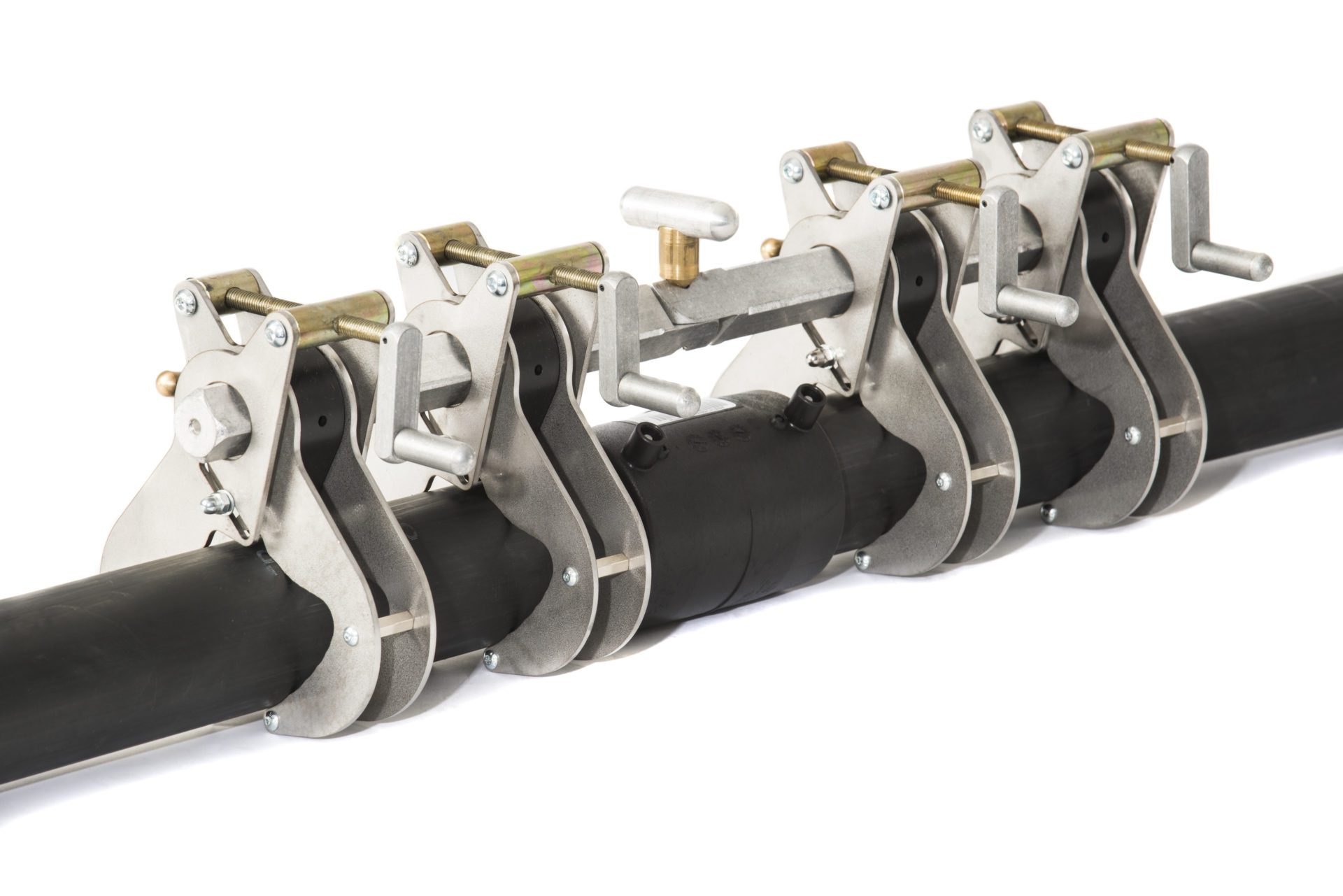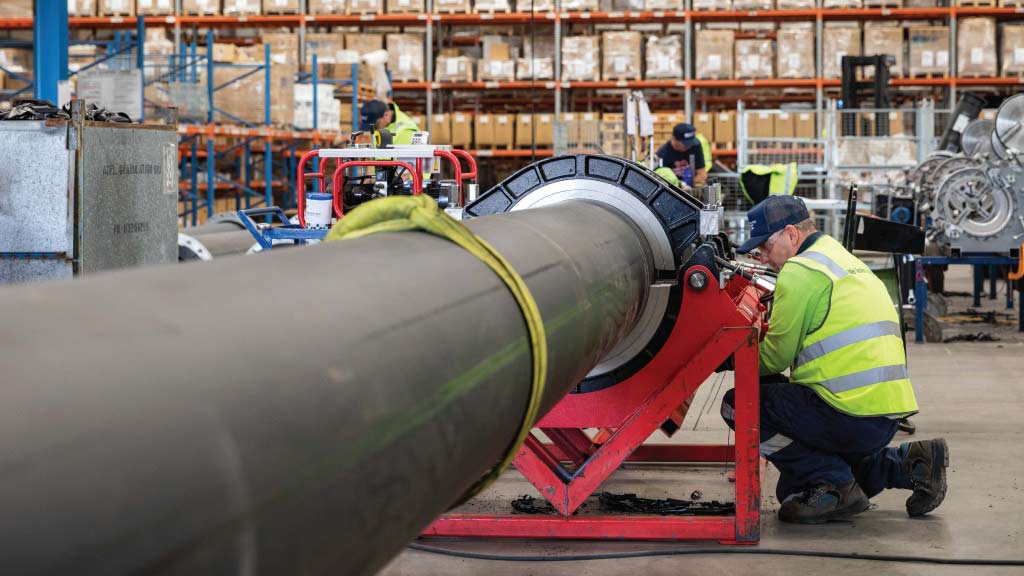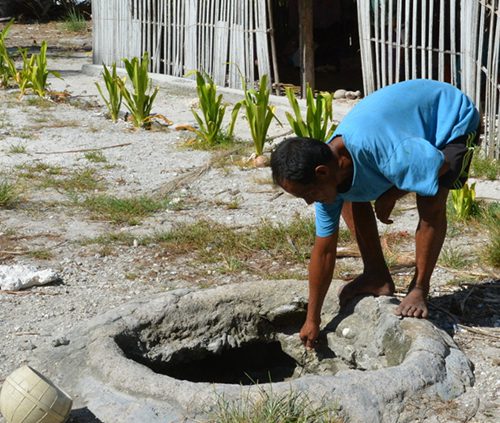4 Steps for Systematic Electrofusion Welding

Shape it, Scrape it, Clamp it, Cool it.
Electrofusion welding is a precise process critical in ensuring durable, leak-proof connections in HDPE piping systems. Whether you’re working on pipelines for water distribution, mining, or chemical processing, following a systematic approach is essential. Electrofusion welding offers long-lasting, reliable joints that withstand high pressures and demanding conditions when performed correctly.
Let’s dive into the critical steps to ensure the success of your electrofusion jointing projects:
Why a systematic electrofusion welding approach matters
In electrofusion welding, consistency is key. Torrential rains or challenging site conditions, such as those threatening to isolate mines, test the reliability of piping systems. In such scenarios, failure is not an option. This is why using trained and accredited personnel and the correct tools and techniques is vital. Every step must be executed with precision to achieve the highest joint integrity.
1. Shape it – preparing the pipes and fittings
The first step in successful jointing is preparing the surfaces to be welded. To ensure a proper fit, the pipe ends must be cut square and aligned correctly.
- Use a pipe cutter: Clean, even cuts are non-negotiable for effective jointing.
- Deburr and align: Make sure no irregularities at the cut edge could interfere with the welding process.
- Dry and clean the surface: Moisture or dirt can compromise the quality of the joint.
2. Scrape it – surface preparation
Scraping the pipe’s surface removes the oxidized layer that could prevent proper fusion. Without this step, even a correctly aligned joint may fail.
- Manual scrapers or rotary tools: Use specialized tools designed for HDPE pipes.
- Consistency is key: Scrape uniformly around the circumference of the pipe.
- Inspect thoroughly: Ensure the fusion zone is clean and smooth before moving to the next step.
3. Clamp it – securing the joint
Securely clamping the pipe and fitting during welding is important for maintaining alignment and avoiding movement that could compromise the weld.
- Use the right clamps: Invest in high-quality clamps designed for your pipe size and application.
- Prevent movement: Even slight shifts during welding can weaken the joint.
- Verify alignment: Double-check the positioning before starting the fusion process.
4. Cool it – allowing proper cooling time
Cooling is just as important as the fusion process itself. Premature handling can lead to joint failure.
- Follow manufacturer guidelines: Different fittings may have specific cooling requirements.
- Avoid external stress: Ensure the joint remains undisturbed during the cooling period.
- Inspect after cooling: Once the joint is set, perform a visual and physical inspection to confirm its integrity.
Tools make the difference!
Using the right tools for electrofusion welding can significantly impact the outcome. Each tool must meet quality standards to ensure accuracy and efficiency, from pipe cutters and scrapers to clamps and electrofusion machines. Advanced Piping Systems recommends working with trusted brands and investing in tools designed specifically for HDPE piping. Watch this 45 second video to see the 4 different steps in action.
Key benefits of electrofusion welding…
When electrofusion welding is performed systematically, it provides several significant advantages. First, it ensures durability, as properly welded joints are highly resistant to leaks and can withstand high-pressure environments effectively. Electrofusion-welded HDPE joints exhibit excellent chemical resistance, making them ideal for industries that deal with aggressive chemicals. Lastly, the process promotes efficiency; with the right preparation and tools, electrofusion welding saves time while consistently delivering superior results. These advantages make electrofusion welding a reliable and cost-effective solution for numerous applications across various industries.
Train for success
Successful jointing depends on more than just tools; it requires skilled personnel. At Advanced Piping Systems, we strongly recommend training and accreditation to ensure everyone involved understands the process and executes it flawlessly. Skilled operators can make informed decisions on-site and adapt to challenging conditions. Did you know we can host your training session? Contact us to learn more.
Advanced Piping Systems – Your partner in precision
Whether you’re managing a mine site or installing pipelines in urban areas, Advanced Piping Systems offers the tools, fittings, and expertise to help you succeed. From training resources to high-quality HDPE fittings, we support your projects at every step.
Read our two articles about Successful EF Jointing and Using The Right Tools for further insights into successful electrofusion welding.
Explore our range of fittings and tools or contact our friendly Customer Service team for questions and support.






